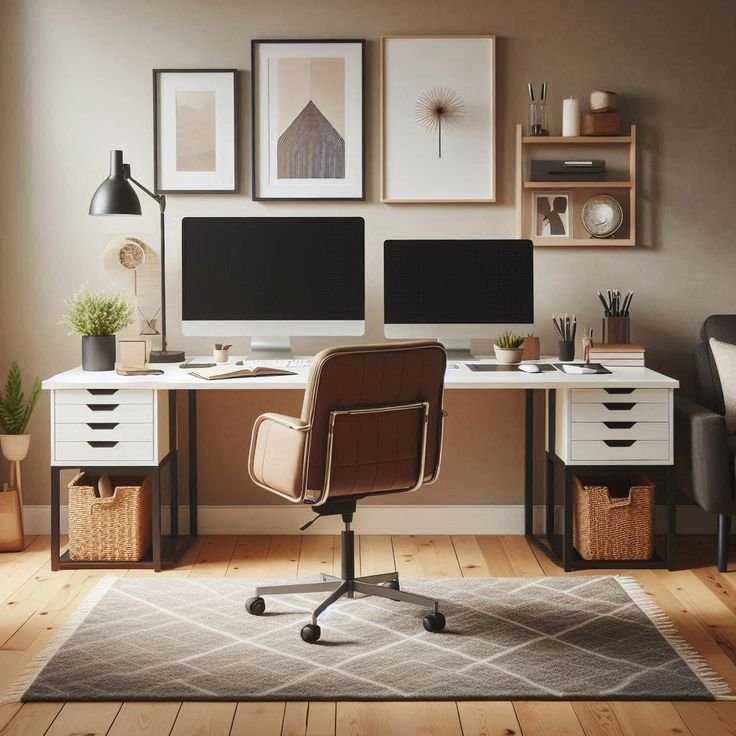Home Office & Studies: Creating a Productive and Comfortable Workspace
In today’s world, where remote work and online learning are increasingly common, having a well-designed home office or study space is essential. Whether you’re working from home, pursuing higher education, or simply need a quiet place to focus, the right environment can boost productivity and enhance overall well-being. Here’s how you can create a functional and inspiring workspace at home.
1. Choosing the Right Location
Selecting the right spot for your home office or study is crucial. Look for a quiet area with minimal distractions. Natural light is beneficial for focus and reducing eye strain, so if possible, position your desk near a window. If space is limited, consider using a corner of a room or converting a closet into a compact workstation.
2. Ergonomic Furniture for Comfort and Health
Investing in ergonomic furniture can make a significant difference in your work or study efficiency. A comfortable chair with proper lumbar support and an adjustable desk can help prevent back and neck strain. Your screen should be at eye level to avoid discomfort, and an external keyboard and mouse can enhance usability.
3. Organizing for Efficiency
Clutter can be distracting, so keeping your workspace organized is key. Use shelves, storage bins, or filing cabinets to keep essential documents and supplies within reach. Desk organizers can help keep small items like pens, notepads, and cables tidy. Digital organization is equally important—maintain a structured file system on your computer to avoid wasting time searching for documents.
4. Proper Lighting for a Productive Atmosphere
Good lighting is crucial for reducing eye strain and maintaining focus. Natural light is ideal, but if that’s not an option, use a combination of overhead lighting and a desk lamp with adjustable brightness. Warm lighting can create a cozy atmosphere, while bright white light can help maintain alertness.
5. Personalizing Your Space
Adding a personal touch to your workspace can make it more inviting and inspiring. Consider incorporating plants, artwork, or motivational quotes. A well-decorated workspace can enhance creativity and make spending time there more enjoyable.
6. Minimizing Distractions
To maintain focus, eliminate potential distractions. If noise is an issue, consider noise-canceling headphones or playing background music that aids concentration. Set clear boundaries with family members or roommates to minimize interruptions during work or study hours.
7. Maintaining a Healthy Routine
Your home office or study should support a healthy routine. Take regular breaks to stretch and move around to avoid stiffness. Following the Pomodoro Technique—working in focused intervals with short breaks—can help maintain concentration and productivity.
Final Thoughts
A well-designed home office or study can make a world of difference in your productivity, comfort, and overall work or learning experience. By focusing on ergonomics, organization, and personalization, you can create a space that supports efficiency and well-being. Start small, make adjustments as needed, and enjoy the benefits of a dedicated workspace!










